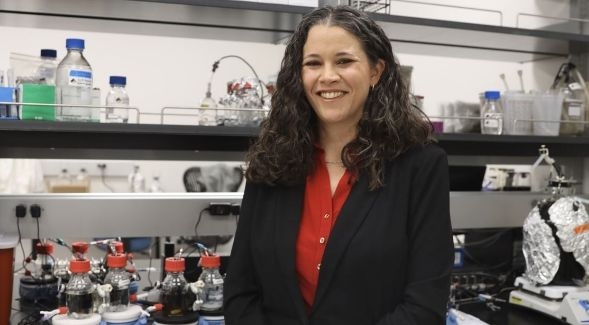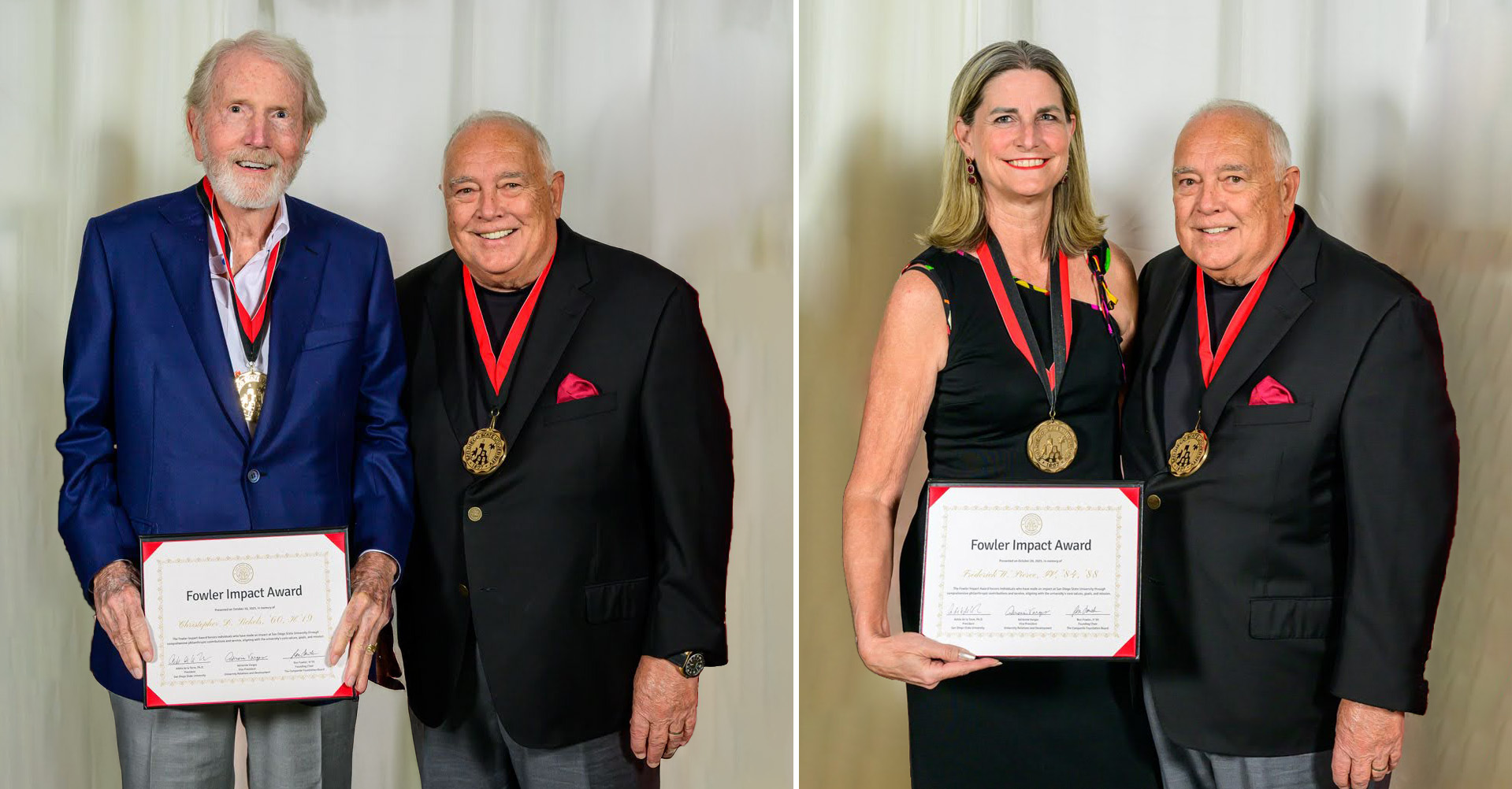From Bacteria to Archaea: Resource Recovery from Wastewater
Environmental engineering professor Christy Dykstra earns an NSF CAREER award to continue her research on bioelectrotechnical systems for energy recovery from wastewater

Environmental engineer Christy Dykstra remembers buying expensive regalia for her Ph.D. graduation and justifying the cost because she would reuse it for her future mentees’ graduations.
When Dykstra joined the San Diego State University faculty in 2019, she was able to attend the graduation of her students and reap the benefits of seeing them succeed. Now, the assistant professor of environmental engineering gets to help pave the way for more future environmental engineers as the latest SDSU recipient of the National Science Foundation’s Early CAREER Award.
CAREER grant recipients are early-career faculty members selected for their potential as academic role models in research and education and to lead advances in the mission of their institution. Dykstra’s award is the seventh for SDSU faculty members in 2021-22.
As director of the Environmental Biotechnology Lab (EBL) at SDSU, Dykstra's research centers around water, wastewater, and water reuse treatment technologies. She is exploring the electrical relationship between bacteria and archaea, an ancient form of life that constitutes a domain of single-celled organisms, a subject with surprising implications for the development of new carbon-neutral energy sources.
Her CAREER award, titled "Elucidating the Interaction(s) Between Bacteria and Archaea in a Biocathode" will provide better understanding of how to build a more efficient cathode that could potentially bring wastewater treatment facilities to energy-neutral, or even energy-producing, status. The findings also have the potential to enhance methane production, which can benefit health research (archaea is an important component of gut health), genetic engineering, and even space exploration.
“The possibility of a direct electrical connection between bacteria and archaea is an exciting new hypothesis Dr. Dykstra will explore in her research,” said Janusz Supernak, chair of the Department of Civil and Construction Engineering. “I am impressed by her ability to combine her pioneering research activities with her outstanding performance as a teacher and advisor to three student organizations.”
Humble Beginnings
As a first-generation college student who was often the only female student in her class, Dykstra relied heavily on scholarships to pay her way through school, taking night classes and working full time.
A self-described contrarian, Dykstra operated under the idea that “You don’t need to be a traditional student to succeed: put yourself in the right place and the right time will come.”
While serving on a Diversion, Equity and Inclusion committee for her department, she learned preparing students early on in their schooling career — and training the teachers to spark the interest in STEM — is of the essence.
To help address an enrollment gap for Latinx engineering students, a large portion of the grant will help students in local K-12 schools. As a Hispanic-Serving Institution, SDSU is well-positioned to help local Hispanic students.
Over the course of the five-year grant, Dykstra plans to bring ten teachers into her lab for summer apprenticeships, where they will develop a lesson plan for the following school year. In this process, Dykstra plans to continue to engage with the local teachers by conducting research and publishing articles with them.
“I wanted to really engage with younger students to try to spark that interest,” Dykstra said. “Sometimes all it takes is one person really believing in you. And it changes your whole mindset of what you want to do.”
Research Students
Dykstra will also use funds to provide research opportunities for SDSU students, whom she describes as “energizing.”
“SDSU students are just incredible. The undergraduates in particular have really amazed me at stepping up and doing research that involves really, really complex stuff and taking it on. And I couldn't ask for better students.”
The feelings are mutual from current students and alumni alike.
“Working in Dr. Dykstra's lab has been a pivotal point in my education and appreciation for Environmental problem-solving. She allowed me to learn and be involved in the discussion of her research as a freshman,” said Isabella Bush, a research assistant in Dykstra’s lab on BES-SPC research and trials.
Other former students’ current successes point to the solid foundation they received in Dykstra’s lab:
“Dr. Dykstra gave me the opportunity to progress in her research project by adapting and changing the style and content of our research practices when the pandemic limited us; and for that I appreciate her for it. The experience was very fruitful,” said Mark Anthony Relon ('20), a former research assistant who hopes to incorporate research in a laboratory in his new position as an environmental engineer with the Environmental Protection Agency.
At next month’s commencement, she’ll be proudly donning her regalia, cheering her students on. Years from now, the hope is for the grant to pave the way for the next round of graduates: K-12 students who benefit from the program created by the NSF CAREER grant.
“My thinking is that the earlier we can get to them and spark that interest, the better it will be when they go through their academic career and hopefully go to university. Maybe even SDSU!”


